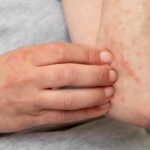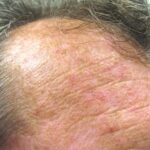Understanding Onychomycosis: Causes, Treatments, and What to Expect
At Apollo Dermatology, we strive to educate our patients about common dermatological conditions and their treatments. One such condition is onychomycosis, a fungal infection of the nails that affects millions of people worldwide. If you’ve noticed thickened, discolored, or brittle nails, you might be dealing with this condition. Let’s dive into what onychomycosis is, its causes, and the various treatment options available.
What is Onychomycosis?
Onychomycosis is a fungal infection that typically affects the toenails but can also occur in the fingernails. It starts as a white or yellow spot under the nail and can progress to cause nail thickening, crumbling edges, and even nail detachment if left untreated.
Causes of Onychomycosis:
- Fungi: Dermatophytes, yeast, and non-dermatophyte molds are the main culprits.
- Risk Factors: Aging, reduced immunity, diabetes, athlete’s foot, poor circulation, and nail injuries increase your risk.
Treatment Options for Onychomycosis
Several treatments are available for onychomycosis, each with its pros and cons. Here’s what you need to know:
1. Topical Treatments
Topical antifungals are applied directly to the nail and surrounding skin.
- Examples: Efinaconazole (Jublia), Tavaborole (Kerydin), Ciclopirox (Penlac).
- Effectiveness: Works best for mild cases; cure rates range from 10-35%.
- Side Effects: Minimal, but may include redness, itching, or burning.
- Duration: Applied daily for 6-12 months.
2. Oral Antifungal Medications
Oral medications target the infection from within.
- Examples: Terbinafine (Lamisil), Itraconazole (Sporanox).
- Effectiveness: More effective than topical treatments, with cure rates of 60-80%.
- Side Effects: Can include headache, gastrointestinal issues, rash, and, rarely, liver toxicity. Regular blood tests may be required to monitor liver function.
- Duration: Typically taken for 6-12 weeks.
3.Laser Therapy
This newer treatment uses laser light to destroy the fungus.
- Effectiveness: Clinical studies show promising results, though long-term efficacy data is limited.
- Side Effects: Usually minimal, with some patients reporting warmth or mild discomfort during the procedure.
- Duration: Several sessions may be needed over a few months.
4. Surgical Nail Removal
In severe cases, removing the affected nail allows direct treatment of the underlying tissue.
- Effectiveness: Helps in extreme cases and when other treatments have failed.
- Side Effects: Pain and risk of infection at the surgical site.
- Duration: Recovery takes a few weeks, and new nail growth can take several months.
Choosing the Right Treatment
The choice of treatment depends on the severity of the infection, your overall health, and your preferences. At Apollo Dermatology, we perform a thorough evaluation to tailor the treatment plan to your needs.
Preventing Onychomycosis
While treatment is available, prevention is key to keeping your nails healthy:
- Keep your nails clean and dry.
- Wear breathable footwear.
- Avoid walking barefoot in public areas like pools and locker rooms.
- Regularly trim your nails and avoid injuring the nail bed.
Conclusion
Onychomycosis can be stubborn but is treatable with the right approach. If you suspect a fungal nail infection, schedule a consultation with Dr. Dupati. We’re here to help you achieve healthy, beautiful nails!
If you have any questions or would like to learn more, feel free to reach out to our office online or call us at 248-436-4888. Your skin’s health is our priority, and we’re here to help!
Stay healthy,
The Apollo Dermatology Team
















